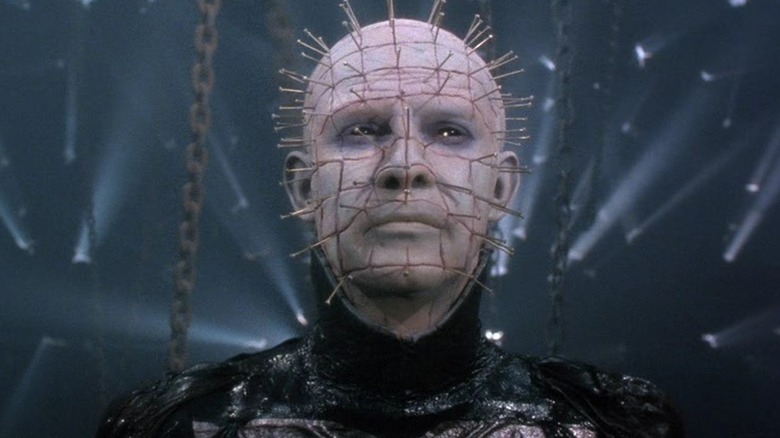
Clive Barker's novella "The Hellbound Heart," first published in 1986, tells the story of a man named Frank who has experienced everything he feels he can sexually. In seeking a more intense experience, he turns to a mystical puzzle box, said to offer the ultimate sensual pleasure. In solving it, Frank summons a group of beings called Cenobites. "Cenobite" is simply a word for someone who belongs to a monastery. The Cenobites have patches of skin skillfully sliced off their bodies, and are all mutilated to the point of not looking human. They bleed. They are in constant pain.
The lead Cenobite, described as being androgynous, with a feminine voice and elaborate nails decorating their bare head and face, explains that they have reached a level of physical experience beyond sensory overload, and their extreme version of sadomasochism has taught them that pain and pleasure are indivisible. The Cenobites drag Frank into their S&M-based Hell-like realm to be tortured — and to experience sexual pleasure from it — in perpetuity.
In 1987, Barker adapted "The Hellbound Heart" to film. "Hellraiser" changed some of the novella's story elements, but ported over the wild "Hellbound" mythology intact. For Barker, the body and its various humors are a gateway to transcendent, spiritual experience. He sings the body electric, only with whips and chains. The Cenobites, unlike most movie monsters, were not mad slashers who thirsted for blood and death, but the ultimate S&M doms. Indeed, the first scene of "Hellraiser" sees the Lead Cenobite — played by Doug Bradley — solving the puzzle box that summoned him and intentionally returning to Hell. These weren't beings who stalked Earth killing people willy-nilly. These were calm sadists waiting at the end of a road for travelers of the extreme traversed themselves.
Obsession
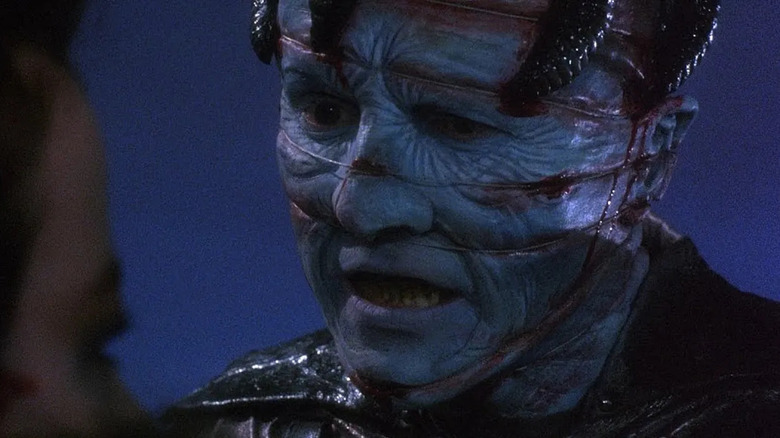
In terms of popular culture, the Cenobites — in particular the Lead Cenobite, renamed Pinhead in all subsequent sequels — are often placed alongside other slasher movie villains like Jason Voorhees, Freddy Krueger, and the like. "Hellraiser" fans, though, might find themselves a little uncomfortable with the association. Serial killers from 1980s slasher movies all tended to stalk and kill victims with bloodthirsty glee. They sought mayhem, revenge, power, or simply an outlet for their uncontrollable evil impulses. They were predators. The Cenobites, by contrast, weren't stalkers who sought death. They, like vampires, needed to be invited into your home. If an idle seeker's sexual obsession reached a fever pitch, the Cenobites would be there to push them over the line. They weren't monsters to flee. They were monsters to run toward.
Tony Randel's 1988 follow-up "Hellbound: Hellraiser II" expanded the "Hellraiser" myth beyond sexuality. In "Hellbound," Cenobites are summoned by those suffering from intellectual fixation. The sequel moves out of the body and into the mind. The main character from "Hellbound" is Dr. Chanard (Kenneth Cranham) a brain surgeon who has become obsessed with finding the meaning of the mysterious puzzle box from the first movie. In his exploration, he is forced into Hell where he, too, becomes a Cenobite. A Cenobite so horrifying, in fact, that he manages to kill off all the old Cenobites from the first movie. Brash, intellectual obsession is more powerful than a carefully considered dive into S&M.
The Cenobites represent certain kinds of dark human experiences. They are not a threat from without like most slashers. They are a threat from within. They are our own terrifying lusts and obsessions personified.
The Design
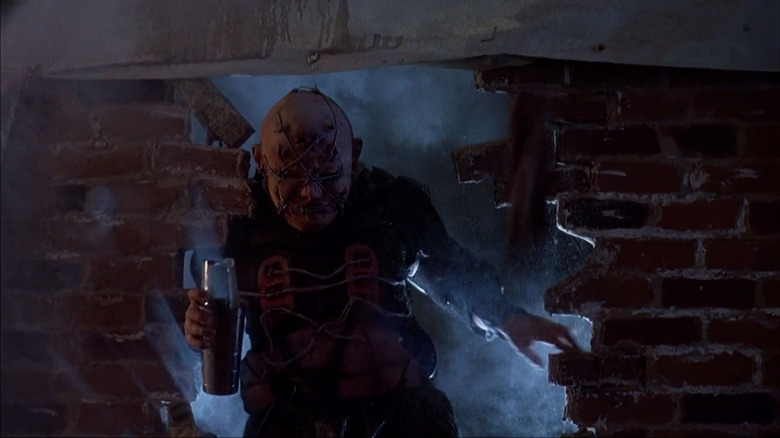
One must also pause to appreciate the design of the Cenobites. Pinhead has become the de facto face of the "Hellraiser" movies, but he is rarely alone. The credited Female Cenobite (Grace Kirby in the first, Barbie Wilde in the second) is a pale-faced, blade-wielding punker with her throat held open by wires. The Chatterer (Nicholas Vince) seems to have had its face replaced by scar tissue, its teeth forever bared by wires that pry its mouth hole open. In later sequels, one would see a Cenobite constructed of identical twins, stitched together, their facial flesh twisted together on a small wooded bale. A woman's scalp would be split open down the middle, exposing her skull, the flaps of flesh hooked to her shoulders. One notable Cenobite would have no body below its armpits, a head and shoulders walking around on its hands. As movie monsters go, the Cenobites are unique.
This is not to say that the Cenobites couldn't occasionally be quite silly. In Anthony Hickox's shlocky American-made sequel "Hellraiser III: Hell on Earth," Pinhead was no longer a dark-souled S&M host, but a traditional slasher who sought to leave Hell and invade the Earth, killing everyone in his path. Never mind that he would send himself back to Hell intentionally. In that film's climax, Pinhead magically created additional Cenobites on the fly to aid him in the mayhem. A club bartender (Brent Bolthouse) was wrapped in barbed wire and threw cocktail shakers full of gasoline. He could breathe fire. Notoriously, the same club's DJ (Eric Willhelm) was mutilated by multiple compact discs and transformed into a destructo robot that flung CDs like ninja stars. It was all pretty stupid.
The Downhill Slide
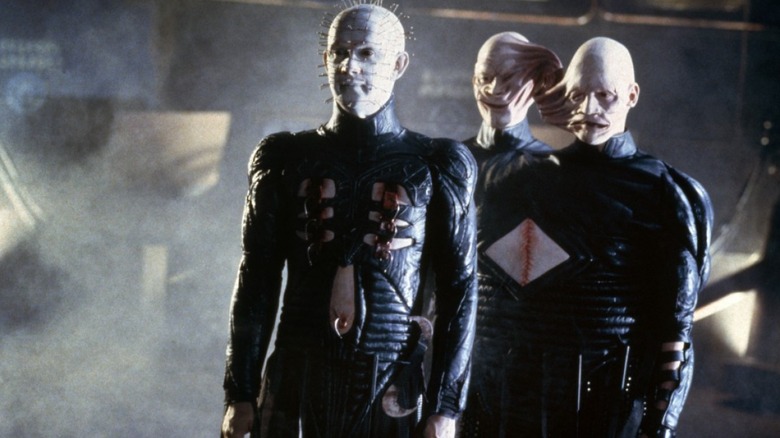
The "Hellraiser" series would continue apace into many, many sequels of very little note. Kevin Yagher's 1996 film "Hellraiser: Bloodline" bent over backward to justify Pinhead's out-of-character ravings in "Hellraiser III" and — ambitiously — took place over three time frames starting with the invention of the infamous puzzle box, and ending on a satellite in the distant future. It's better than one might think, but was met with such a troubled production that Yagher took his name off the film. It's credited to Alan Smithee.
The many straight-to-video "Hellraiser" movies are largely useless as they forgot the entire premise of "Hellraiser" and the central appeal of the Cenobites. In the sequels — at least in parts five through eight — Hell has fallen back into a more traditional, Christian version of the realm, existing as a realm of post-death punishment for sinners on Earth. Three of the films in a row feature the "they were dead all along" twist, a cavalier spoiler I offer to prevent you from watching the awful, awful "Hellraiser" sequels. The Cenobites are still awesome to behold — as mentioned, the twin Cenobite seen in "Bloodline" is an amazing creation — but their character has been altered into something less threatening.
They no longer await sexual crusaders. They now torture people for minor infractions like theft and murder. How boring.
It's All About The Sex
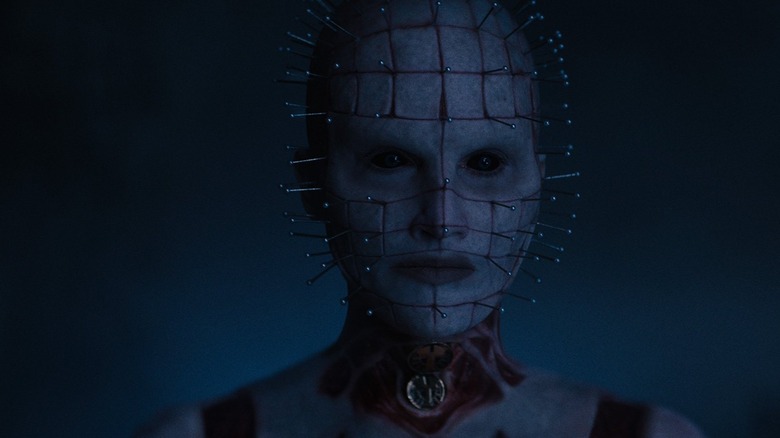
A new "Hellraiser," the 11th in the series, is due out on Hulu on October 7th. Actress Jamie Clayton will be playing Pinhead. How much this film will refer to any of the incidents from the previous 10 chapters remains to be seen. One can hope, however, that director David Bruckner has remembered that the Cenobites are motivated by sex and sexual domination. The nails in Pinhead's face are meant as a means of pleasurable torment, her face constantly in pain, her face constantly stimulated. The exposed muscle tissue is a sign of raw nerve ends being rent asunder.
The new "Hellraiser" does seem to recall that there is an aesthetic dimension to S&M. The torture devices are not merely the sharpened butcher knives of Michael Myers or the torment finger blades of Freddy Krueger. There is an elegance to the Cenobites. As if care has been taken in selecting their particular mutilations. The new Pinhead appears to have a pair of coins or amulets embedded in her throat, a piece of twisted jewelry to enhance the pain/pleasure experience.
Traditionally, the Cenobites' victims/inductees tend to be adults, people who have lived long enough to refine their sexual proclivities to a degree that they have learned they want more. Pinhead isn't interested in the usual cadre of dopey, horny teens frequently seen in slasher movies. He wants to take you by the hand ... and then take off your hand. And you will be grateful for the pain, you miserable worm. The Cenobites are explorers in the outer reaches of experience. There is nothing quite like them.
Read this next: The Horror Movies We Can't Wait To See In 2022
The post Why Hellraiser's Cenobites Are Some of the Greatest (and Weirdest) Horror Characters of All Time appeared first on /Film.
0 Comments